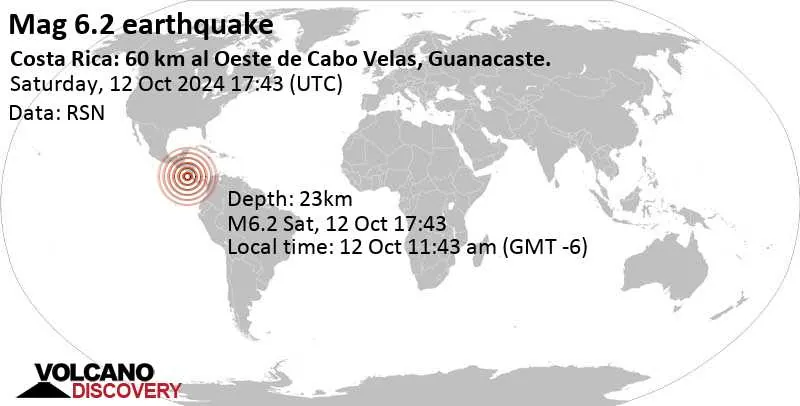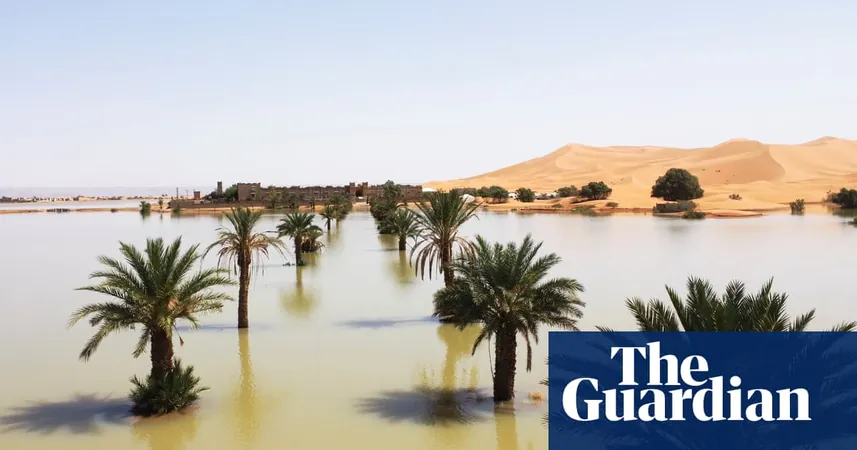
Powerful 6.2 Magnitude Earthquake Strikes Off the Coast of Costa Rica: What You Need to Know!
2024-10-12
Author: Noah
On Saturday, October 12, 2024, at approximately 11:43 AM local time, a significant earthquake measuring 6.2 on the Richter scale rattled the North Pacific Ocean, striking 106 kilometers west of Liberia, Guanacaste, Costa Rica. This seismic event left residents across the region both shaken and stirred, prompting numerous reports of tremors and unsettling experiences throughout Costa Rica’s coastal communities.
According to the Modified Mercalli Intensity (MMI) scale, which measures the intensity of shaking experienced by people on the surface, the earthquake yielded varying reports from different locations:
Reports from Various Locations:
- **Playa Grande:** A resident described the intense shaking as feeling akin to being on a roller coaster—books fell from shelves and windows rattled during the strong shaking rated at MMI VI.
- **Tamarindo:** Reports indicated moderate shaking (MMI V) where people experienced rattling noises and a noticeable sway in their buildings.
- **Avellanas:** In a more light-hearted note, one user reported feeling gentle rocking while taking a siesta, demonstrating the varied intensity across the region (MMI IV).
The quake also generated noticeable responses further afield, including reports from as far as Alajuela and even neighboring Nicaragua, where light tremors were felt.
The earthquake’s intensity was certainly felt across a wide range of distances, with reports detailing sensations from very weak to quite strong. This highlights the complexity of how seismic waves travel and diminish with distance. Notably, residents in places close to the epicenter described strong vibrations, while those further away only felt mild tremors.
Safety Tips:
In terms of safety, experts remind the public to remain informed about earthquake preparedness methods. Key tips include:
1. **Drop, Cover and Hold On:** In the event of an aftershock, it's crucial to protect yourself from falling debris.
2. **Emergency Plans:** Establish a family emergency plan and practice what to do before, during, and after an earthquake.
3. **Supplies:** Keep an emergency kit accessible with supplies such as water, non-perishable food, flashlight, and first aid materials.
For those who live in seismic regions, understanding local geological conditions and keeping abreast with real-time reports can be vital for safety and security.
Stay tuned for more updates as geological surveys will continue to monitor any aftershocks and the overall seismic activity in the region. Remember, knowledge and preparation can significantly diminish risk in the face of natural disasters.









 Brasil (PT)
Brasil (PT)
 Canada (EN)
Canada (EN)
 Chile (ES)
Chile (ES)
 España (ES)
España (ES)
 France (FR)
France (FR)
 Hong Kong (EN)
Hong Kong (EN)
 Italia (IT)
Italia (IT)
 日本 (JA)
日本 (JA)
 Magyarország (HU)
Magyarország (HU)
 Norge (NO)
Norge (NO)
 Polska (PL)
Polska (PL)
 Schweiz (DE)
Schweiz (DE)
 Singapore (EN)
Singapore (EN)
 Sverige (SV)
Sverige (SV)
 Suomi (FI)
Suomi (FI)
 Türkiye (TR)
Türkiye (TR)